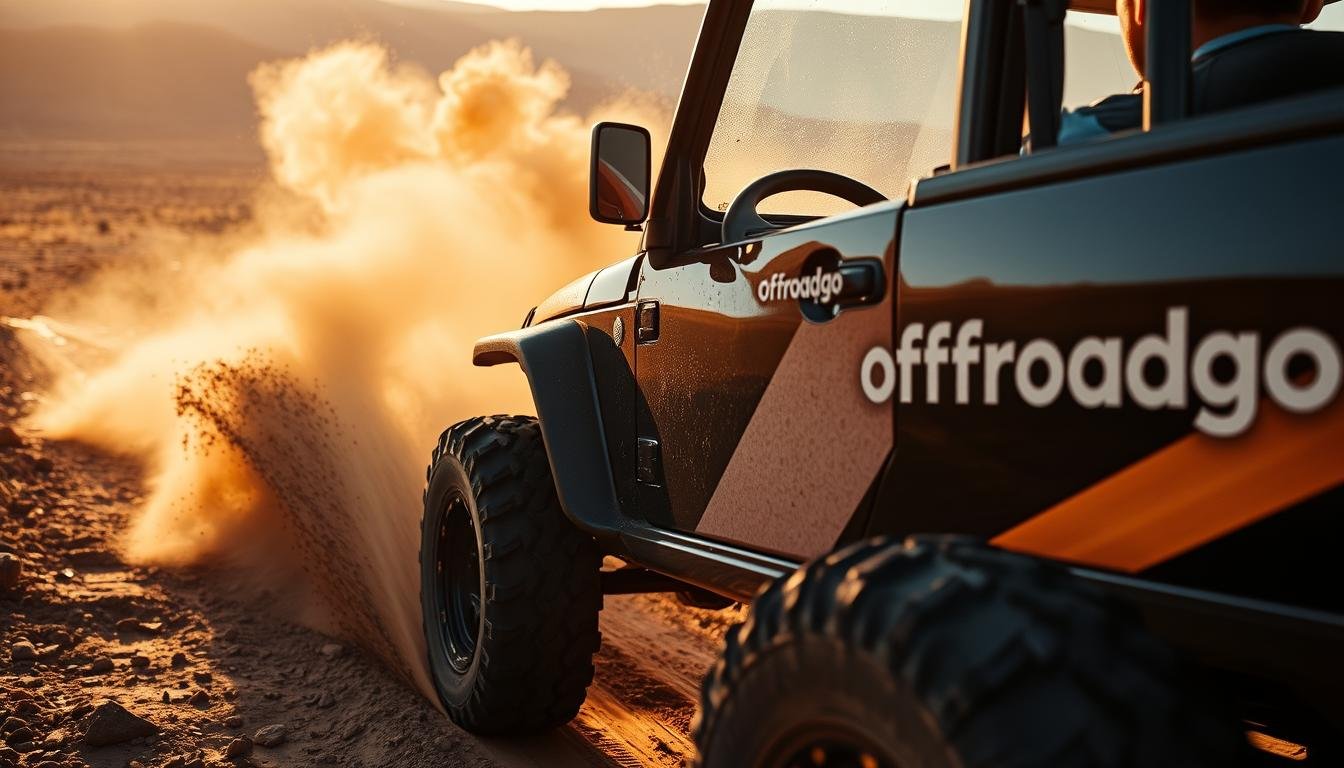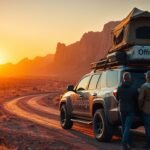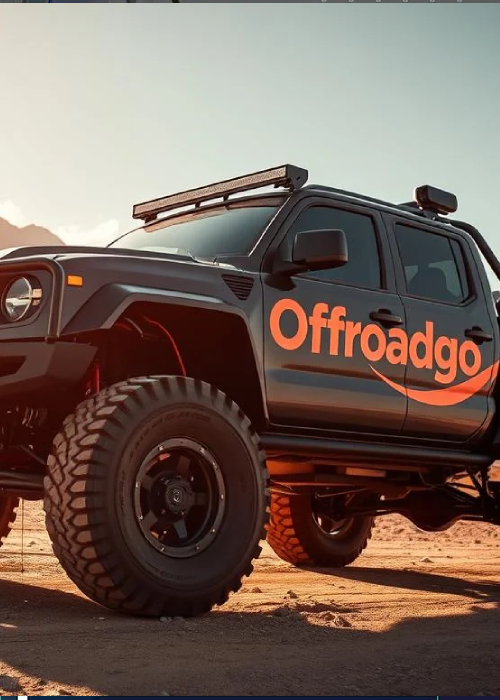Are you an adventure-seeker who loves offroad driving? You might wonder if your regular car insurance covers you on rough terrain. The truth is, offroad driving has unique risks that standard policies might not cover fully.
- What Defines Offroad Driving in Today’s Insurance Landscape
- Legal Classifications of Offroad Vehicles
- Common Offroad Activities and Their Risk Profiles
- Where Standard Auto Policies End and Specialized Coverage Begins
- The State of Offroad Insurance in 2025
- Recent Changes in Offroad Coverage Regulations
- New Technology Affecting Insurance Requirements
- Environmental Considerations Impacting Coverage
- When Your Standard Auto Policy Won’t Protect You Offroad
- Typical Exclusions for Unpaved Terrain
- How to Identify Coverage Gaps in Your Current Policy
- Real-World Scenarios Where Claims Get Denied
- Specialized 4×4 Insurance Options for 2025
- Coverage Designed for Trucks and SUVs
- Protection for Factory vs. Modified 4×4 Vehicles
- Comparing Recreational vs. Professional Use Policies
- Essential Coverage Elements for Different Offroad Vehicles
- ATVs and UTVs: Specialized Requirements
- Dirt Bikes and Motorcycles: Coverage Considerations
- Rock Crawlers and Heavily Modified Vehicles
- Overlanding Rigs and Expedition Vehicles
- How to Evaluate Your Offroad Insurance Needs
- Step 1: Assess Your Vehicle Type and Modifications
- Step 2: Analyze Your Offroad Activity Frequency and Risk Level
- Step 3: Inventory Valuable Equipment and Accessories
- Step 4: Consider Geographic Areas of Operation
- Critical Exclusions in Offroad Insurance Policies
- Competition and Racing Events
- Illegal Trail Access and Trespassing
- Environmental Damage Liability
- Passenger Injury Limitations
- Must-Have Add-Ons for Complete Offroad Protection
- Custom Equipment and Aftermarket Parts Coverage
- Recovery and Extraction Services
- Trailer and Transported Vehicle Protection
- Remote Area Emergency Assistance
- How to Choose the Best Offroad Insurance Provider
- Evaluating Specialized Offroad Insurance Companies
- Questions to Ask Before Purchasing a Policy
- Red Flags to Watch For in Policy Language
- Customer Service Considerations for Offroad Claims
- Cost Factors Affecting Your Offroad Insurance Premiums
- Vehicle Value and Modification Expenses
- Driver Experience and Claims History
- Coverage Limits and Deductible Choices
- Discounts and Bundling Opportunities
- Conclusion: Securing the Right Protection for Your Offroad Adventures
- FAQ
- What is offroad insurance, and why do I need it?
- What types of vehicles are considered offroad vehicles?
- Does my standard auto insurance policy cover offroad driving?
- What are the risks associated with offroad driving?
- How do I evaluate my offroad insurance needs?
- What are some common exclusions in offroad insurance policies?
- Can I customize my offroad insurance policy with add-ons?
- How do I choose the best offroad insurance provider?
- What factors affect my offroad insurance premiums?
- Can I get discounts on my offroad insurance?
- How does offroad insurance coverage work for modified vehicles?
- What is the difference between recreational and professional use policies?
As an offroader, you need private civil liability insurance for at least $1,000,000. This ensures you’re covered for injuries or damage to property caused by your vehicle. But what does this coverage include, and are there more things you should know?
This article will dive into the need for specialized insurance coverage for offroad driving in 2025. We’ll look at the types of vehicles needing special insurance and important things for offroaders to consider.
Key Takeaways
- Understand the risks associated with offroad driving and the need for specialized insurance coverage.
- Learn about the types of offroad vehicles that require special insurance coverage.
- Discover the minimum insurance requirements for offroaders, including private civil liability insurance.
- Explore key considerations for offroaders when selecting an insurance policy.
- Find out what additional coverage options are available for offroad driving.
What Defines Offroad Driving in Today’s Insurance Landscape
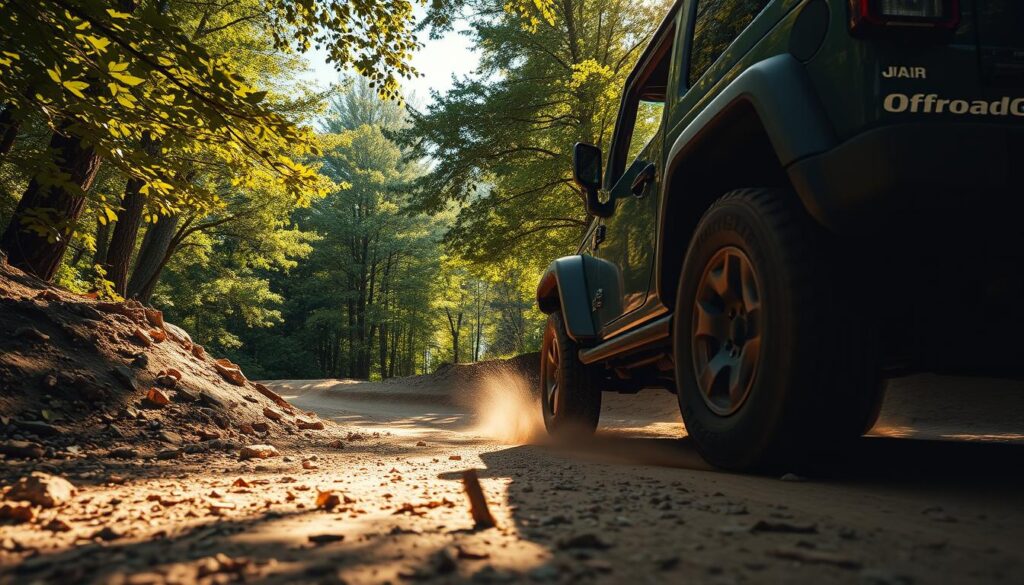
Offroad driving is a wide field with many vehicles and activities. It’s important to know the different types of vehicles and activities. This knowledge helps you get the right insurance.
Legal Classifications of Offroad Vehicles
Offroad vehicles are divided into categories. These include ATVs, quad bikes, side-by-sides, and all-terrain motorcycles. The type of vehicle affects the insurance you need.
Common Offroad Activities and Their Risk Profiles
Offroad activities range from casual trail riding to extreme rock crawling. Each activity has its own risk level. Insurers use these levels to set premiums and coverage terms.
Where Standard Auto Policies End and Specialized Coverage Begins
Standard auto insurance doesn’t cover offroad driving well. This is especially true for unpaved terrains or competitive events. Specialized offroad insurance covers unique risks of these activities.
| Vehicle Type | Common Use | Insurance Requirement |
|---|---|---|
| ATVs | Trail Riding, Recreation | Specialized Offroad Coverage |
| Side-by-Sides | Recreation, Utility | Customized Policy |
| All-Terrain Motorcycles | Trail Riding, Competition | Offroad Motorcycle Insurance |
The State of Offroad Insurance in 2025
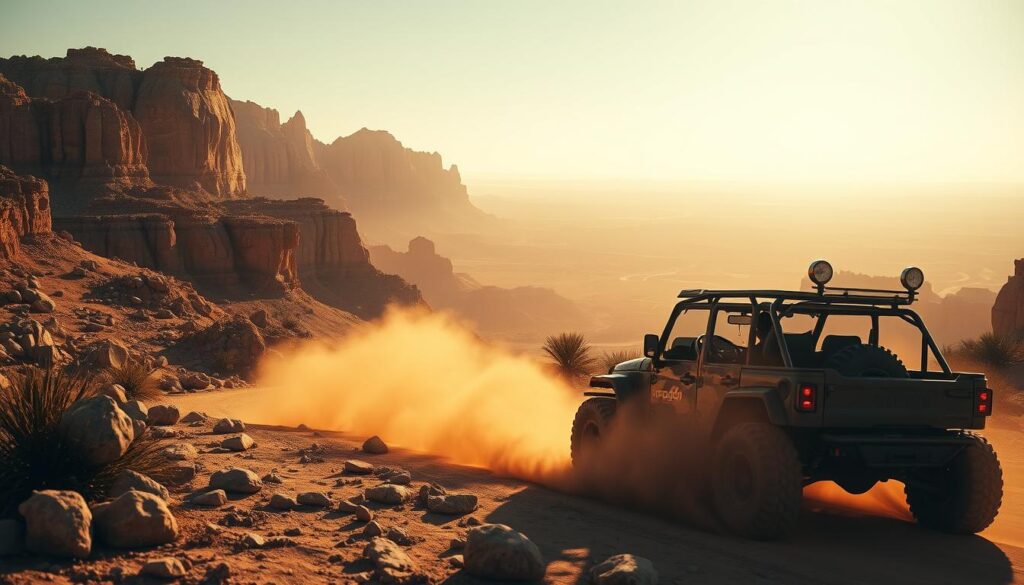
In 2025, offroad insurance is changing a lot. There are new rules, tech updates, and more focus on the environment.
Recent Changes in Offroad Coverage Regulations
One big change in 2025 is mandatory civil liability insurance for offroad vehicles. This rule helps protect owners and the environment from damage. Key aspects of this regulation include:
- Increased minimum coverage limits
- Stricter definitions of offroad vehicles
- Mandatory reporting of offroad activities
New Technology Affecting Insurance Requirements
New tech like GPS and vehicle telematics is changing insurance. These technologies give real-time data on how vehicles are used, where they are, and how they’re driven. This means insurance can be more tailored to each driver.
Environmental Considerations Impacting Coverage
Environmental issues are also affecting offroad insurance in 2025. Insurers now offer policies for environmental damage from offroad activities. This includes coverage for:
- Soil erosion and land degradation
- Wildlife habitat disruption
- Water pollution
As offroad insurance keeps evolving, it’s key for fans to keep up. This way, they can make sure they have the right coverage for their adventures.
When Your Standard Auto Policy Won’t Protect You Offroad
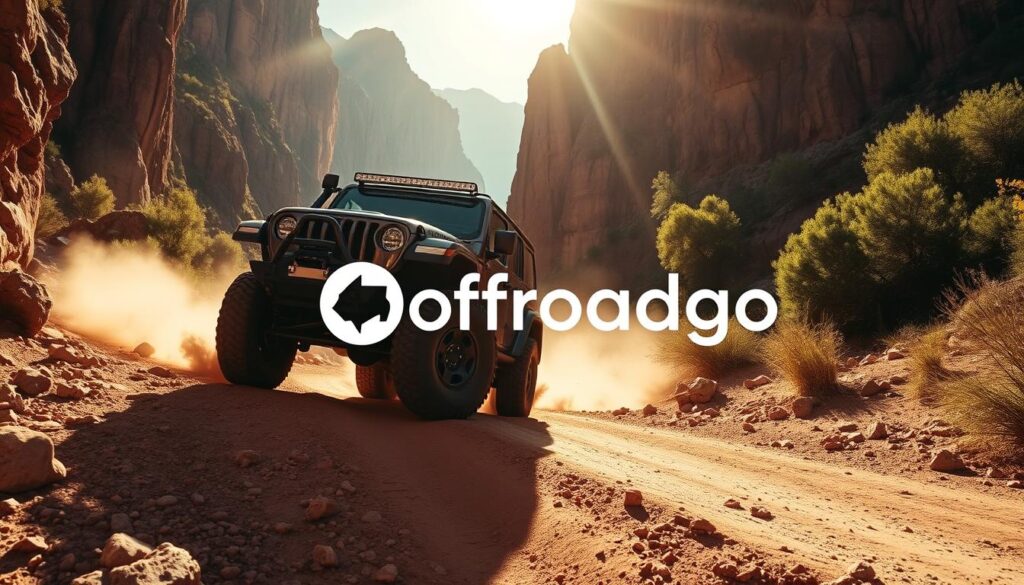
If you love offroading, you might be surprised. Your standard auto policy might not cover you offroad. Most policies don’t cover driving on unpaved roads or trails.
Typical Exclusions for Unpaved Terrain
Most auto insurance policies don’t cover unpaved roads or trails. This includes dirt roads and trails. If you drive offroad, you might not be covered.
How to Identify Coverage Gaps in Your Current Policy
To find coverage gaps, check your policy documents. Look for sections on offroad driving and unpaved terrain. If you’re unsure, call your insurance provider.
Real-World Scenarios Where Claims Get Denied
Claims can be denied for offroad accidents. For example, driving on closed trails or at offroad events. Knowing these scenarios helps you choose the right insurance.
For offroad protection, look into offroad insurance coverage. Compare offroad insurance quotes to find the best offroad insurance for your adventures.
Specialized 4×4 Insurance Options for 2025
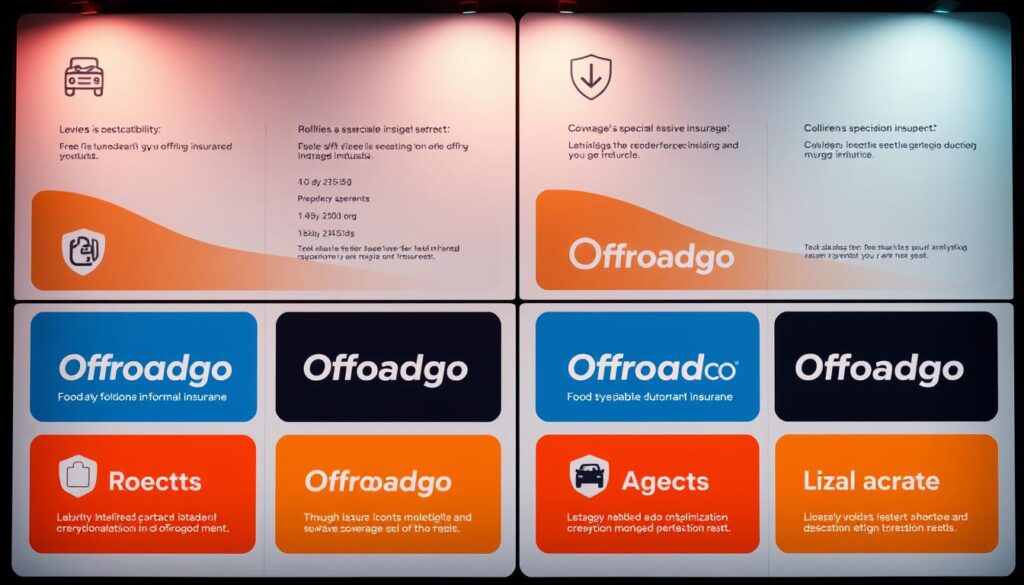
As you explore offroad driving in 2025, knowing about specialized insurance is key. The offroad insurance world has changed a lot. Now, there are many policies for different needs and vehicle types.
Coverage Designed for Trucks and SUVs
Many offroad fans use trucks and SUVs for their trips. Special insurance for these vehicles covers offroad-specific equipment and changes. This includes winches, lift kits, and big tires needed for offroad driving.
Some policies also have agreed value coverage. This means you get the full value of your vehicle if it’s totally lost, without any depreciation.
Protection for Factory vs. Modified 4×4 Vehicles
Insurance is available for both factory and modified 4×4 vehicles. If your vehicle is modified, tell your insurer about it. This ensures you’re fully covered.
Some companies focus on modified 4x4s. They offer policies that consider the increased value and risk of these vehicles.
Comparing Recreational vs. Professional Use Policies
How you use your 4×4 vehicle affects your insurance needs. Recreational use policies are for those who drive for fun. Professional use policies are for those who use their vehicles for work, like tours or rentals.
When picking a 4×4 insurance policy in 2025, think about your vehicle, its changes, and how you use it. The right policy lets you enjoy offroad adventures without worry, knowing you’re protected.
Essential Coverage Elements for Different Offroad Vehicles
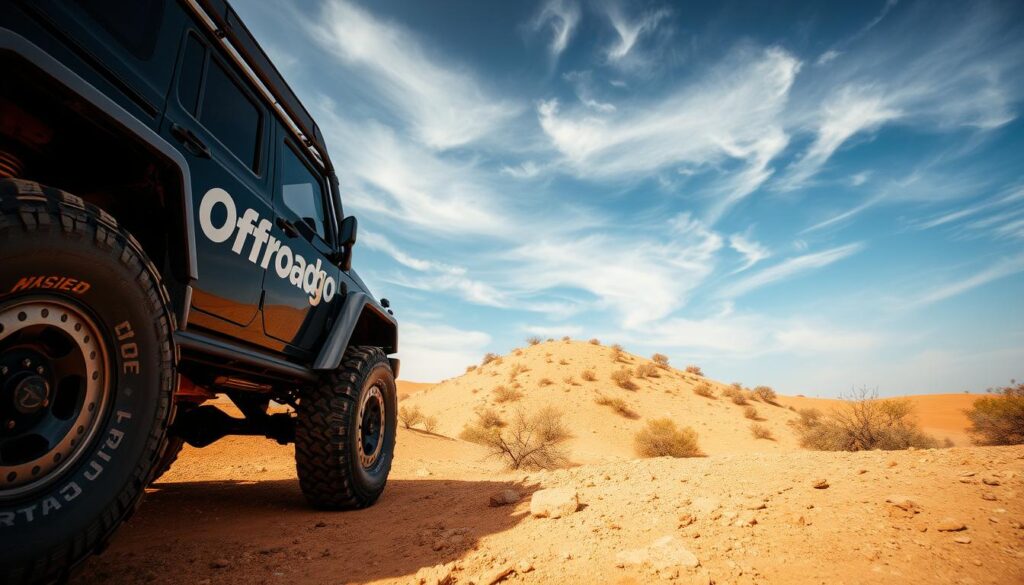
Different offroad vehicles face unique risks. They need special insurance to stay protected. Knowing what each vehicle needs is key.
ATVs and UTVs: Specialized Requirements
ATVs and UTVs need insurance that covers their extra parts and changes. This ensures your investment is safe from damage or theft.
Key considerations for ATVs and UTVs include:
- Coverage for aftermarket parts and accessories
- Liability coverage for accidents involving other people or property
- Collision and comprehensive coverage for damage to the vehicle itself
Dirt Bikes and Motorcycles: Coverage Considerations
Dirt bikes and motorcycles for offroad use need special insurance. This is because they face unique risks, like racing or tough terrains.
Important factors to consider:
- Coverage for racing or competitive events, if applicable
- Protection against theft or vandalism, especially for high-value models
- Medical payments coverage for injuries sustained while riding
Rock Crawlers and Heavily Modified Vehicles
Rock crawlers and heavily modified vehicles face special insurance challenges. Their custom nature and extreme use make them unique.
Experts say, “Heavily modified vehicles need insurance that covers the vehicle and its modifications.”
“The right insurance policy for a rock crawler or heavily modified vehicle can mean the difference between financial ruin and recovery in the event of an accident.”
Overlanding Rigs and Expedition Vehicles
Overlanding rigs and expedition vehicles are equipped for long trips. They need insurance that covers the vehicle and its gear.
Essential coverage elements include:
- Coverage for the vehicle itself, including modifications
- Protection for additional equipment and gear
- Emergency assistance and recovery services for remote areas
How to Evaluate Your Offroad Insurance Needs
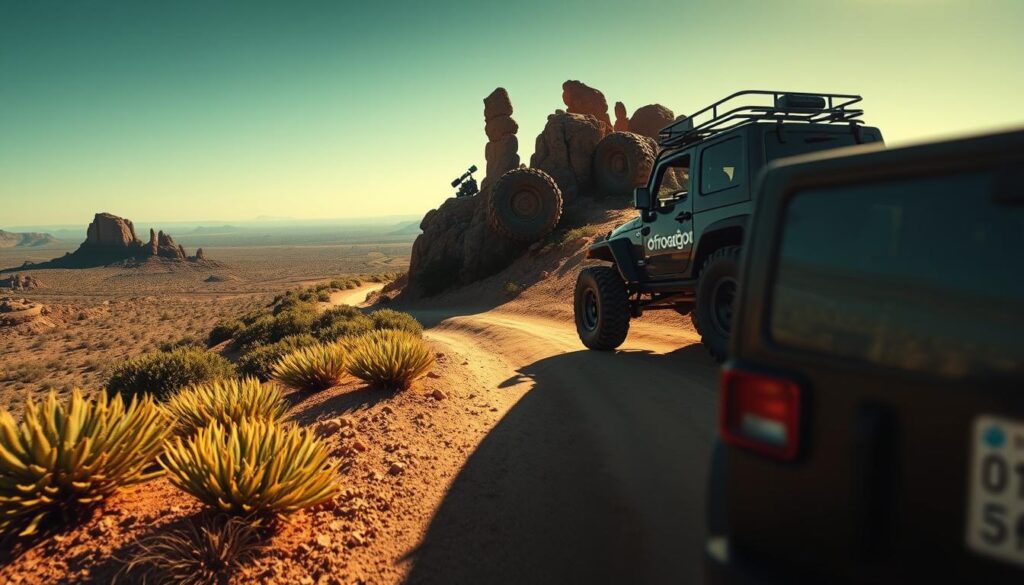
Offroad driving has its own set of risks. The first step to manage these risks is to assess your insurance needs. Knowing what insurance you need is key to protecting your vehicle and your wallet.
Step 1: Assess Your Vehicle Type and Modifications
The type of vehicle you use for offroad driving affects your insurance needs. Whether it’s a stock 4×4 SUV or a modified rock crawler, your vehicle’s details matter. Think about any aftermarket parts like lift kits or winches, as they can raise repair costs.
Step 2: Analyze Your Offroad Activity Frequency and Risk Level
How often and in what conditions you drive offroad is important. If you’re out there a lot or doing risky activities, you might need more insurance. Consider the terrain and challenges you face to gauge the risk.
Step 3: Inventory Valuable Equipment and Accessories
Offroad enthusiasts often have valuable gear like recovery tools or camping equipment. Make a list of these items and their values. Some insurance policies might cover these, so include them in your insurance plan.
Step 4: Consider Geographic Areas of Operation
The place where you drive your offroad vehicle also matters. Different areas have their own risks, like extreme weather or remote locations. Look for insurance that fits your usual driving spots for the right coverage.
By following these steps, you can understand your offroad insurance needs better. This helps you choose the right policy. Always talk to insurance companies to compare and find the best policy for you.
Critical Exclusions in Offroad Insurance Policies
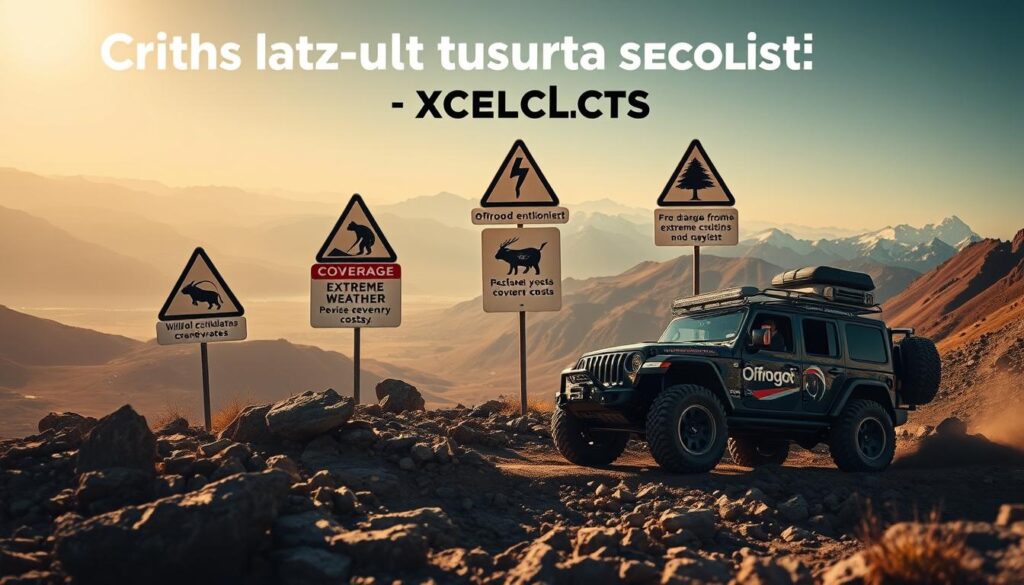
When you hit the trails, it’s key to know what your offroad insurance policy doesn’t cover. These policies aim to protect you from many risks. But, they also have specific exclusions that can leave you at risk if you’re not careful.
Competition and Racing Events
Many offroad insurance policies don’t cover you during competition and racing events. If you’re in an accident during a race, you might not be insured. This is because racing is a high-risk activity that can lead to damage or injury.
Illegal Trail Access and Trespassing
Driving on closed or off-limits trails can also void your insurance. It’s vital to only drive on legal trails to keep your coverage intact.
Environmental Damage Liability
Offroad insurance policies often don’t cover environmental damage. If your offroad activities harm the environment, like oil spills, you could be personally responsible for the cleanup costs.
Passenger Injury Limitations
Some policies also have limits on covering injuries to passengers. Knowing these limits is crucial, especially if you often have passengers. You might need extra coverage to protect them properly.
Knowing about these exclusions helps you manage risks better and stay protected on your offroad adventures. Always check your policy and consider extra coverage if needed.
Must-Have Add-Ons for Complete Offroad Protection
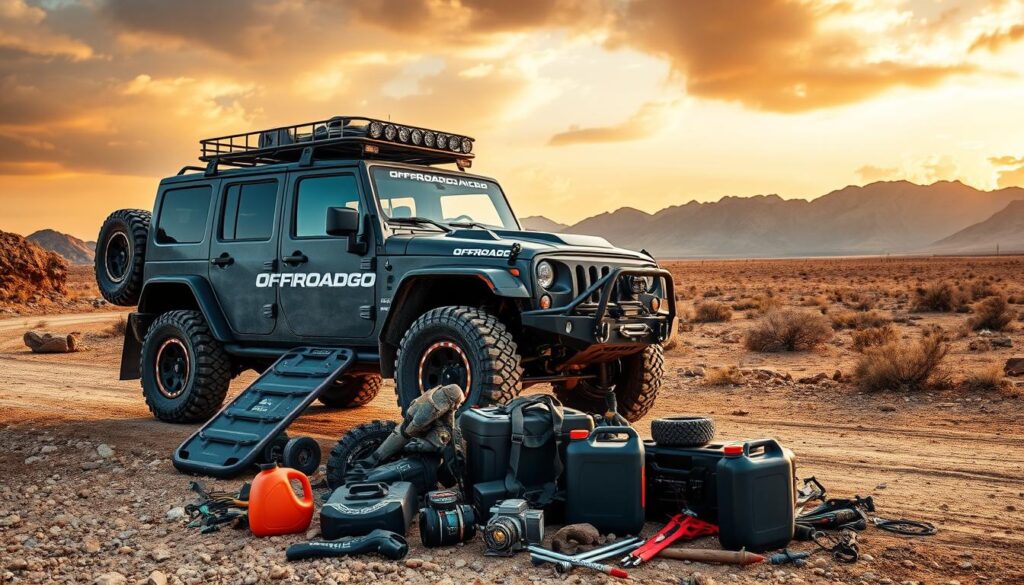
When you go offroad, you need more than just basic insurance. In 2025, adding special insurance add-ons is key. Offroad driving has its own risks that regular insurance might not cover.
Custom Equipment and Aftermarket Parts Coverage
Have you spent money on custom gear or aftermarket parts for your offroad vehicle? Adding coverage for these extras to your policy is smart. It keeps your investment safe from damage or loss, saving you money.
Recovery and Extraction Services
Being stuck in a remote area can be scary. Recovery and extraction services are a lifesaver. This add-on pays for towing or extracting your vehicle, giving you peace of mind and financial security.
Trailer and Transported Vehicle Protection
Do you move your offroad vehicle on a trailer? Think about adding trailer and transported vehicle protection to your policy. It covers your trailer and the vehicle it carries against damage or loss while in transit.
Remote Area Emergency Assistance
For those who love offroading in remote areas, remote area emergency assistance is essential. This coverage gives you access to emergency services like medical evacuation and vehicle recovery when you need it most.
Adding these must-have add-ons to your offroad insurance policy makes your adventures safer and more enjoyable.
How to Choose the Best Offroad Insurance Provider
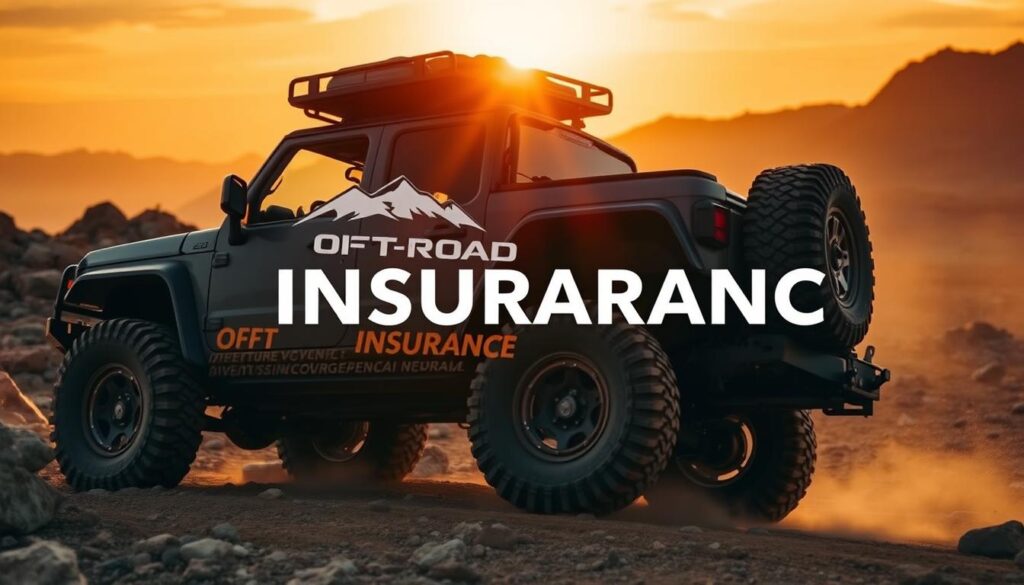
Choosing the right offroad insurance is key to protect your vehicle and money. Look at their experience with offroad vehicles, policy details, and customer service.
Evaluating Specialized Offroad Insurance Companies
Find insurance companies that focus on offroad insurance. They know what offroad fans need and offer custom coverage. These companies have policies that cover offroad activities well.
Questions to Ask Before Purchasing a Policy
Ask about coverage limits, deductibles, and what’s not covered. Also, find out about their claims process and customer support. Knowing this helps you choose wisely.
Red Flags to Watch For in Policy Language
Watch out for unclear policy language or hidden exclusions. Read the policy carefully to avoid surprises.
Customer Service Considerations for Offroad Claims
Check how well the insurance handles claims. Read reviews from other offroad fans. Good customer service is key when you need to file a claim.
| Provider | Coverage | Customer Service |
|---|---|---|
| Provider A | Comprehensive | Excellent |
| Provider B | Limited | Poor |
Cost Factors Affecting Your Offroad Insurance Premiums
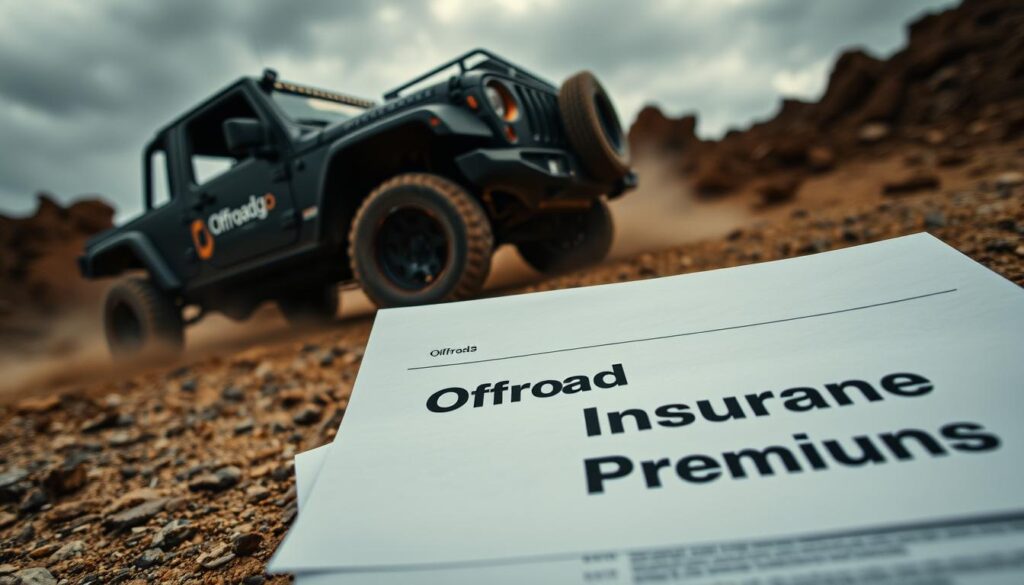
Knowing what affects your offroad insurance costs is key. Several things influence how much you pay for your coverage.
Vehicle Value and Modification Expenses
The cost of your offroad vehicle and any changes you make matter a lot. More expensive vehicles or those with special features cost more to insure. For example, adding a winch or bigger tires can raise the vehicle’s value and your insurance premium.
Driver Experience and Claims History
Your driving skills and claims history also affect your premiums. Drivers with more experience and no claims history usually pay less. On the other hand, those with accidents or claims history pay more.
Coverage Limits and Deductible Choices
The coverage you choose and your deductible amount also matter. More coverage means better protection but costs more. A lower deductible can lower your premium but means you’ll pay more when you file a claim.
Discounts and Bundling Opportunities
Insurance companies often offer discounts or bundle deals to lower your premiums. For instance, combining your offroad insurance with other policies can save a lot. Also, taking a defensive driving course or adding safety features can get you discounts.
| Factor | Impact on Premium | Potential Savings |
|---|---|---|
| Vehicle Modifications | Increases premium | Opt for standard equipment |
| Driver Experience | More experience = lower premium | Take a defensive driving course |
| Coverage Limits | Higher limits = higher premium | Adjust limits based on need |
| Deductible Choices | Lower deductible = higher premium | Choose a higher deductible |
| Bundling Policies | Can lower premium | Bundle with other insurance policies |
By understanding these factors and making smart choices, you can manage your offroad insurance costs well. This way, you get the coverage you need without breaking the bank.
Conclusion: Securing the Right Protection for Your Offroad Adventures
Exploring offroad driving means you need to know about insurance. Getting the right offroad insurance in 2025 is key. You must look at the coverage types, figure out what you need, and pick a good provider.
Your regular car insurance might not cover offroad driving. That’s why you need specialized 4×4 insurance. It’s essential for your safety.
Think about your vehicle, any custom parts, and how often you go offroad. This helps you find the right insurance. Don’t forget to add important extras like coverage for custom parts and recovery services.
When choosing an insurance company, check their experience with offroad insurance in 2025. Watch out for any exclusions or red flags in their policy.
Getting the right insurance for offroad adventures is all about being informed and taking action. With the right 4×4 insurance in 2025, you can enjoy your offroad trips without worry. You’ll be ready for any unexpected risks or challenges.
FAQ
What is offroad insurance, and why do I need it?
Offroad insurance is for vehicles like 4×4 trucks and ATVs used off paved roads. It’s needed because regular auto insurance often doesn’t cover offroad driving. This leaves you at risk of financial loss in case of accidents or damage.
What types of vehicles are considered offroad vehicles?
Vehicles like 4×4 trucks, SUVs, ATVs, UTVs, dirt bikes, and motorcycles are offroad. They’re made for driving on dirt trails, mud, sand, and rocky terrain.
Does my standard auto insurance policy cover offroad driving?
No, standard auto insurance usually doesn’t cover offroad driving. You might need special offroad insurance to be protected while driving off paved roads.
What are the risks associated with offroad driving?
Offroad driving can lead to accidents, damage to your vehicle, and harm to the environment. You could also be responsible for injuries to others.
How do I evaluate my offroad insurance needs?
Think about your vehicle’s type, value, and any changes you’ve made. Also, consider how often you drive offroad and the terrain. The risks of your activities are important too.
What are some common exclusions in offroad insurance policies?
Policies often exclude racing, illegal trail access, environmental damage, and limits on passenger injuries. Knowing these exclusions helps manage your risks.
Can I customize my offroad insurance policy with add-ons?
Yes, you can add coverage for custom parts, recovery services, trailer protection, and emergency help in remote areas to your policy.
How do I choose the best offroad insurance provider?
Look for specialized insurance companies. Ask questions before buying a policy. Watch for red flags in policy language. Good customer service is key when making a claim.
What factors affect my offroad insurance premiums?
Your vehicle’s value, any modifications, your driving experience, and claims history affect premiums. Coverage limits, deductibles, and discounts also play a role.
Can I get discounts on my offroad insurance?
Yes, you might get discounts for bundling policies or having a clean claims history. Always ask about available discounts.
How does offroad insurance coverage work for modified vehicles?
Coverage for modified vehicles is more complex. You might need to show proof of modifications and their value to ensure you’re covered.
What is the difference between recreational and professional use policies?
Recreational policies are for personal use, while professional policies are for businesses. Choose based on how you use your offroad vehicle.

